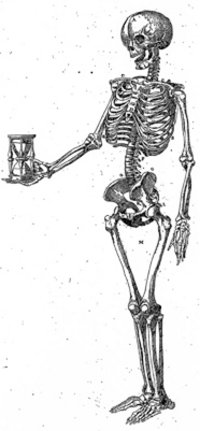The success of medicine at the University of Basel from 1570
Historians have long recognized the outstanding importance of anatomy for the development of early modern medicine and natural science. Well before the frequently invoked “scientific revolution of the seventeenth century,” anatomy in the sixteenth century, along with botany (also pursued primarily by physicians at the time), elevated the practice of empirical observation – “autopsy” in the literal sense of personal examination – to the prevailing methodological and epistemological ideal.
The anatomists at the University of Basel are in many ways representative of these developments, while also playing a part in their advancement. In the sixteenth and early seventeenth centuries, empirical anatomical research became a focal point of interest, at the University of Basel as at other universities in Europe. At the same time, the university’s Faculty of Medicine peaked in importance relative to other European institutions, particularly thanks to its teaching in anatomy, helping it attract numerous medical students from all over the world.
Two leading anatomists of the time played a crucial role in the rise of the Faculty of Medicine in Basel during this period: Felix Platter and Caspar Bauhin. Both had studied in southern Europe, where attempts to place education on a more empirical footing, based on personal experience, had gained influence for some time. Both anatomical and practical instruction were the main reasons that many medical students of the day hailing from north of the Alps opted to spend at least part of their studies at the universities in the south, in cities that were, by the standards of the time, comparatively more urbane.
The fame that Platter and Bauhin gained through their anatomical publications (and in Bauhin’s case, through botanical studies, as well) undoubtedly played a significant part in making Basel’s Faculty of Medicine so appealing to students during the late sixteenth and early seventeenth centuries. A third central figure was Theodor Zwinger. Like few others, Zwinger cultivated a Europe-wide correspondence network, thus helping to make Basel a center of the contemporary Res publica literaria medica.
Even though Platter and Bauhin did not distinguish themselves through widely recognized anatomical discoveries, they provided a solid pedagogical foundation for anatomical instruction with their texts, which were designed expressly for teaching and derived from practical experience. They emphasized the importance of personal autopsy, and Bauhin, a former professor of Greek, also urged his readers in the spirit of medical humanism to study the original texts of Hippocrates, Galen, and Aristotle. Bauhin also played a key role in standardizing anatomical nomenclature; at the time, inconsistent terms for identical anatomical structures repeatedly caused confusion and significantly hindered anatomical instruction.
Anatomy and pathology: a new image of the body
Platter’s and Bauhin’s activities in dissection and publication – underestimated by previous historians – contributed significantly to one of the central developmental processes of early modern Western medicine. For a long time, scholars located the beginnings of pathological anatomy in the eighteenth century, celebrating Giovanni Battista Morgagni with his De sedibus et causis morborum per anatomen indagatis libri quinque (Five books on the seats and causes of diseases investigated through anatomy) from 1761 as its key pioneer. However, Morgagni himself was part of a long tradition, which had already received crucial catalysts through the Observationes of Platter and other authors of the sixteenth and seventeenth centuries, who supplemented clinical descriptions with descriptions of pathological-anatomical findings.
Unlike other contemporary anatomists, Platter and Bauhin systematically linked anatomical findings with the needs of practical medicine. Although the new anatomical knowledge itself had only relatively minor relevance for concrete medical practice at the bedside, Platter and Bauhin set out to collect anatomical findings not only from those who were healthy but also, and especially, from the sick. Their studies repeatedly found changes in organs and other solid parts of the body. They thus developed an increasingly close connection between anatomy, pathological anatomy, and the clinic, whose significance seems to have been recognized by contemporaries.
Platter’s anatomical work and especially his Observationes are accordingly rich in case histories, in which Platter not only describes patients’ history and symptoms but also post-mortem pathological-anatomical findings.
It was not original discoveries but successful efforts to make anatomy accessible and relevant for ordinary practical physicians that probably constitute the decisive characteristic and the powerful legacy of Basel anatomy. This legacy remained, even though the Faculty of Medicine lost its leading position with the end of the era defined by Zwinger, Platter, and Bauhin, and in the wake of devastating epidemics and the effects of the Thirty Years’ War, leaving it one institution among equals for a very long time.



